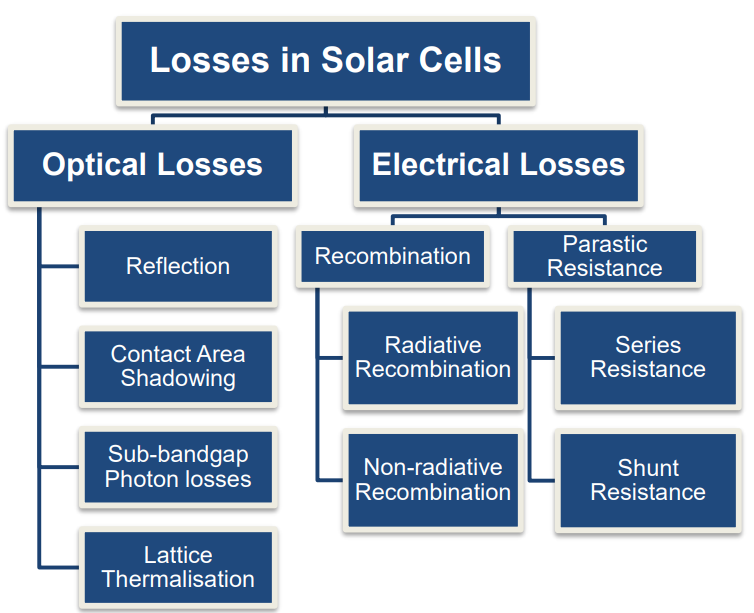25/11/2020
The solar energy industry has seen an extremely rapid development in the past decade. In 2019 alone, we saw over 140 GW of new photovoltaic (PV) power generation capacity installed, leading to the total global PV power generation capacity of 583.5 GW (580.1 GW on-grid and 3.4 GW of off-grid [1]) at the end of 2019. This means more than one fifth of renewable energy in the world today is generated by PV technology.
However, whilst it is only in recent years that we have witnessed a dramatic improvement of the technical and economic feasibilities of PV power generation, it should be remembered that such improvement is an achievement enabled by nearly two centuries of technical and commercial development.
Development of solar cell technology
Discovery of photovoltaic effect and early devices
PV cells in early days looked very different from the advanced solar panels we know today. The first device Edmond Becquerrel used to discover the photovoltaic effect in 1839 (working in his father’s laboratory as a nineteen-year-old) comprised a tank filled with acidic solution, a thin membrane dividing the tank into two sections, and one electrode submerged in the acidic solution in each section. The first advance in the material used in the PV cell was reported by Adams and Days in 1877. Based on the earlier discovery of the photo-sensitivity of selenium by Smith [2], Adams and Days created the first semiconductor-based (selenium based) PV cell [3]. However, although Adams and Days’ PV device comprised a semiconductor material just like modern solar cells (which are typically made of silicon or III-V semiconductor materials), their device, encased in a glass tube, still had a very different shape from modern solar panels.
First solar panel
The origin of today’s solar panel is the device Charles Fritts made in 1883 which had a small selenium surface coated with a thin transparent layer of gold, thus forming a Schottky junction [4]. This effect was then confirmed by Werner von Siemens, the founder of Siemens [5]. Although his device at the time had a low efficiency of 1-2%, Fritts already envisioned the possibilities of replacing fossil fuels with the power produced by solar panels in industrial scale.
First silicon solar cell patents
Solar cells, alongside many other semiconductor devices, benefited from the semiconductor industry boom in the mid-20th century. The p-n junction, which is the foundation of many modern semiconductor devices, was invented at Bell Labs by Russell Ohl in 1939. He also demonstrated the photovoltaic properties of p-n junction, and filed the first silicon solar cell patents in 1941 [US Patents No. 2,402,662 and 2,443,542]. Silicon still remains as the dominant material used in PV technology today, accounting for more than 80% of the PV market [6].
Solar cells for space applications
Despite the semiconductor industry boom, the costs of silicon purification and semiconductor fabrication mid-20th century still remained high. In view of this, PV power generation for terrestrial was considered impractical. However, the rise of the space industry opened up new uses of PV cells. Many extraterrestrial projects required an autonomous and lightweight power source, such as solar cells, for long-term operations. For critical applications such as powering spacecrafts, the benefits of using PV power outweighed the cost issue.
The first spacecraft powered by solar panels was the Vanguard 1 satellite, launched in 1958. It was equipped with 6 silicon solar cells on top of traditional electrochemical batteries. The electrochemical batteries ran out of power within the first few weeks, yet the satellite continued its operation for more than 6 years solely relying on the power generated by the solar cells.
Thanks to technological advances, the economic feasibility of silicon-based solar cells, even for terrestrial uses, is no longer a question today. However, due to various physical constraints, including Shockley-Queisser limit and indirect bandgap, the theoretical maximum solar conversion efficiency for silicon solar cells is capped at 29% (under unconcentrated AM 1.5 solar spectrum) [7]. Given that the state-of-art monocrystalline silicon solar cells already have efficiencies of ~26%, there is not a huge room for future improvement. Overcoming such intrinsic limits of conventional silicon-based solar cells is the main motivation of ongoing novel space PV materials and nanostructures today.
Reducing losses in solar cells
As PV technologies mature, a significant part of recent R&D activities has been dedicated to improving power conversion efficiencies by tackling losses in solar cells. Figure 1 shows various loss mechanisms in solar cells. Two of the main losses in conventional solar cells are the subbandgap losses and lattice thermalisation. The former leads to lower current output and the latter results in lower voltage output. These two optical losses account for more than 50% of the losses in single bandgap solar cells [8]. To this end, there are ongoing studies on multi-junction solar cells (MJSCs, also known as tandem cells) and novel material-based bandgap-engineered solar cells, such as quantum dot (QD) intermediate band solar cells (IBSC). So far, the highest performing class of solar cells in terms of efficiency has been MJSC. The 6-junction III-V solar cells by scientists at the National Renewable Energy Laboratory (NREL) hold the world record for the highest solar conversion efficiency of 47.1% (under concentrated illumination) [9].

Figure 1 Types of losses in a solar cell.
Development of PV industry in recent years
The development of the PV industry in the 20th century had mainly been fuelled by technological advances and the needs of a few niche markets, such as space applications. On the other hand, the development and expansion of the PV industry since the beginning of 21st century are heavily attributed to cost reductions through economies of scale and public policy support.
One of the main outcomes of this is the increasing importance of improving other components of PV power generation system, not just the solar cell. Alongside the solar cell, PV system comprises many other components, including battery, mounting, AC isolator, inverter, charge controller, and tracking system. Evolution in designs and technologies of such components will further reduce the cost and improve the yield. For example, Capital expenditures (CAPEX) can be reduced by using module trackers comprising torsion locks that can manage heavy bifacial PV panels (for example, as disclosed in the US Patent No. 10,174,970), operating expenditures (OPEX) can be minimised by automating the operation and maintenance, and the yield can be further improved by using reflective and high-albedo foundation and preventing under-module vegetation growths.
The increasing demand for innovations in the non-cell parts of PV systems will be good news for new businesses that wish to step into solar power industry. Perhaps the rapid increase in the number PV-related patent filings in recent years is not only a reflection of technological advances of PV cells, but also a sign of a wider range of innovations to come.
At Reddie & Grose we have extensive experience drafting and prosecuting patent applications covering cutting edge technological developments, ensuring that our clients are provided with high quality patents, which adequately protect their inventions. If you have a solar power-based invention, or would like more information, please contact one of our team.
References
| [1] | IRENA, “Renewable capacity statistics 2020,” 2020. |
| [2] | W. Smith, “Effect of Light on Selenium During the Passage of An Electric Current,” Nature, vol. 7, p. 303, 1873. |
| [3] | R. D. W.G Adams, “The action of light in selenium,” Proceedings of the Royal Society of London, vol. 25, pp. 113-117, 1876. |
| [4] | C. E. Fritts, “On the Fritts selenium cells and batteries,” Journal of the Franklin Institute, vol. 119, no. 3, pp. 221-232, 1885. |
| [5] | W. Siemens, “On the electro motive action of illuminated selenium, discovered by Mr. Fritts, of New York,” Journal of the Franklin Institute, vol. 119, no. 6, pp. 453-456, 1885. |
| [6] | G. H. a. M. S. W. P. Hirshman, “Market survey on cell and module production 2006,” Photon International, p. 136, 2007. |
| [7] | W. Shockley, “The Theory of p-n Junctions in Semiconductors and pn Junction Transistors,” Bell Syst. Tech. J., vol. 28, no. 3, pp. 435-489, 1949. |
| [8] | L. C. H. a. N. J. Ekins-Daukes, “Fundamental losses in solar cells,” Prog. Photovolt. Res. Appl., vol. 19, no. 3, pp. 286-293, 2011. |
| [9] | R. M. F. K. L. S. M. A. S. A. G. N. H. L. G. M. R. Y. T. S. a. T. M. J. F. Geisz, “Six-junction III–V solar cells with 47.1% conversion efficiency under 143 Suns concentration,” Nature Energy, vol. 5, pp. 326-335, 2020. |
This article is for general information only. Its content is not a statement of the law on any subject and does not constitute advice. Please contact Reddie & Grose LLP for advice before taking any action in reliance on it.


